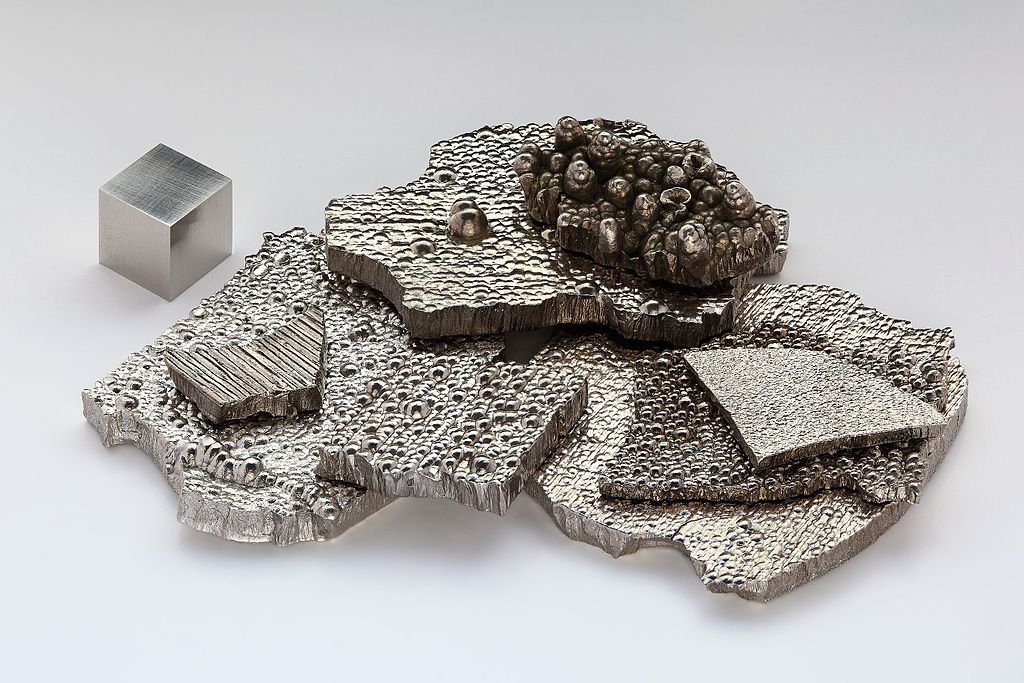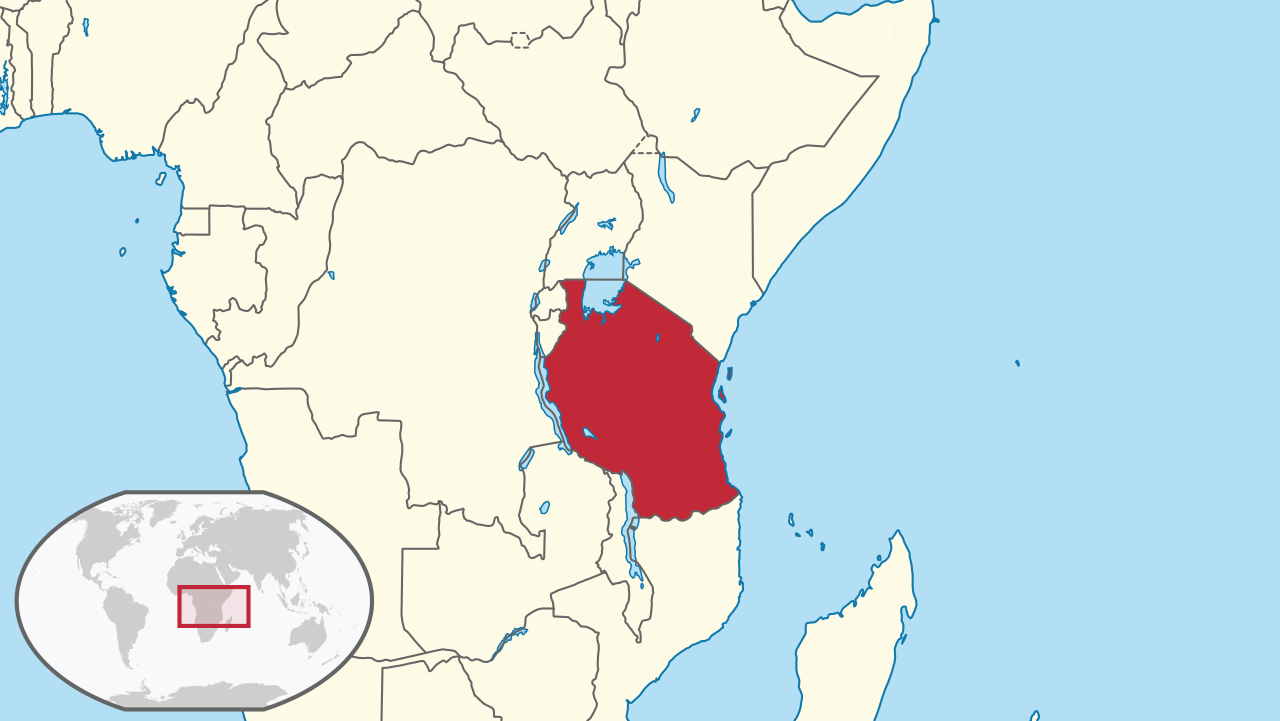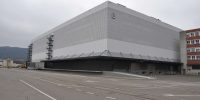
Cobalt chips
ISE - Battery Metals News September 2019
After a long run of cobalt prices, just before reaching US $ 100.000 per ton, the price curve took a turn in March of last year.
Glencore's decision last month to shut down the largest cobalt mine in the world brought new life to the market, but so far the reaction has been relatively subdued as metal is still trading at mid-30.000 dollars.
Even at this level, cobalt is an expensive raw material for electric vehicle manufacturers and battery manufacturers. They have worked hard to find a replacement for cobalt, or at least reduced the amount required.
The nickel-cobalt manganese batteries of the first generation (NCM111) had a chemical composition of 1 part nickel, 1 part cobalt and 1 part manganese. Lower cobalt NCM batteries (622, 523 chemicals) have quickly become standard in China, which accounts for half of the world's electric car sales and a much larger proportion of EV battery production.
The automotive industry is now moving swiftly towards even higher nickel content at the expense of cobalt and manganese, with NCM811's market share rapidly increasing, though still accounting for only a tiny fraction.
Tesla is an advocate of nickel-cobalt / aluminum (NCA) technology, which requires less than a third of the cobalt volume, and the batteries in their latest model already match the NCM811, according to the EV pioneer.
A recent report from Adamas Intelligence says that despite the ongoing savings of cobalt in batteries used by EV manufacturers, the amount of cobalt per vehicle in the first half of the year has increased by 2018% compared to the first half of 45.
The Toronto-based research firm, which tracks EV registrations and battery chemicals in more than 80 countries, says that cobalt used per vehicle has increased from 2,1 kg in 2018 H1 to 3,1 kg in 2019 H1.
Strong sales of battery-powered electric vehicles compared to hybrids, as well as the increasing adoption of NCM cathode chemicals instead of lithium-ion phosphate (LFP) in Chinese industry, was the reason for the increase, says Adamas.
In total, 2019 7.200 used 81 tonnes of cobalt in batteries of all newly sold passenger cars worldwide, representing an increase of XNUMX% compared to the previous year, the report said.
We are mining more dangerous in some African countries
Commodity nationalism in Africa's mining jurisdictions will increase, but volatility will decline in higher-risk countries, according to a new report by global advisory firm Verisk Maplecroft.
The Resource Nationalism Index (RNI), published by Verisk Maplecroft, serves as an objective barometer for current and future mining risk of mining.
According to the latest release of the Veriz Q3 dataset, 2019 is among the top 10 most risky countries for mining, four African countries. Tanzania is ranked 2, Swaziland is ranked 5, Democratic Republic of Congo DRC 5 and Zimbabwe 6.
Tanzania has been the biggest player in the last three years and has fallen from a “medium” to an “extreme” risk.
The Central African Copper Belt, located on the border between Northern Zambia and the southern Democratic Republic of the Congo and Tanzania, captures most of the risks of resource nationalism, while West Africa is relatively benign, Verisk notes.
“The development of Tanzania so far has been extremely astonishing and has resulted in a decrease of two risk categories. When President Magufuli came to power in October 2015, he passed a popular line for the mining sector and introduced an export ban on unprocessed copper and gold, ”the company says.
The ban was aimed disproportionally at Acacia Mining, which was unable to export its production for three years. Magufuli then introduced a new mining law to 2018 Q1, and in the case of Acacia, it was expropriated without compensation, forcing the miners to transfer a share of 16% of the assets to the state, the report said.
Barrick is the sole Acacia owner this month
Resource nationalism is far more complex than traditional anti-investor sentiment in Africa, Verisk claims.
In the last three years, the problem of resource nationalism in 10 has changed in African mining mines, as most governments in Africa compete for foreign direct investment and therefore need to meet the need for private capital, Verisk says.
"Countries that have become dependent on the extractive industries are often prone to resource nationalism, especially when raw material prices are high, political competition is fierce and revenues are low."
The analysts point out that elections have some influence on the pattern of resource nationalism, but say that the direction is difficult to predict.
Looking to the future, Verisk notes that resource nationalism in these countries will remain a dynamic issue that continues to impact on mining companies.
Breaking new ground in mining to avoid dealing with conflict resources
Blockchain, a form of unchanging distributed ledger technology that uses consensus protocols to validate online transactions, is most commonly associated with Bitcoin and other cryptocurrencies.
However, since blockchain transactions are instantly verified on millions of computer networks, could blockchain also be used to verify or "track" transactions beyond those associated with cryptocurrencies and other digital assets? What could this mean for companies with regulatory obligations? Track, review and report specific purchases or procurements? In the past year and a half, companies have begun to address these issues. The following examines how blockchain can be used by companies to determine and verify the origin of "conflict" minerals and thus their regulatory reporting requirements under the "Conflict Minerals Rule" of the US Securities and Exchange Commission (SEC) and theirs To be able to comply with EU equivalents.
background objects
Tantalum, tin, tungsten and gold, also known as “3TG”, are vital components of widely used technologies and other products, from cell phones and batteries to connecting wires to jet planes and jewelry. Unfortunately, 3TG has a different name: "Conflict Minerals". The term “Conflict Minerals” broadly describes minerals whose exploitation and trafficking has resulted in significant negative effects, including human rights abuses and armed conflict in the Democratic Republic of the Congo and the surrounding areas (the “DRC Region”). As more information about the criminal, militia and terrorist structure of networks that benefit from the exploitation of conflict minerals is revealed, consumer demand for information about responsible sourcing grows. For example, in recent years there have been an increasing number of companies that market diamonds, gold and other minerals of ethical origin or “conflict-free”.
In turn, increasing consumer attention has led to a focus on responsible minerals procurement for corporate social responsibility investors and institutional investors. The Interfaith Corporate Responsibility Center, a coalition of nearly 300 global institutional investors representing several trillion dollars in assets under management, and the Forum on Sustainable and Responsible Investment have a joint statement earlier this year to EU policymakers, members of Congress, sent to UN agencies and the Organization for Economic Co-operation and Development (OECD), which called on policymakers to enforce corporate due diligence on reporting on the procurement of conflict minerals. 6 Non-governmental organizations, including civil society groups from the DRC region and beyond, continue to call for greater regulation and transparency in the procurement of conflict minerals.
Blockchain use cases
Several companies have started deploying or offering blockchain solutions to address the issues related to conflict minerals. The Minespider protocol currently works over the Ethereum blockchain and consists of two so-called "layers": a certification layer and a blockchain layer. For the certification level, Minespider sells digitally linked data sets, so-called "certificates", to mineral suppliers. Certificates document the ownership and origin of minerals and contain information on the duty of care selected by the supplier of the minerals, e.g. data on permits, production limits, transfers of ownership, etc. and certify by a "Minespider Certifier" that the origin of a mineral is conflict-free.
The purpose of the certification data is to enable participants in the supply chain to ensure that a given amount of minerals can always be traced back to the certified conflict-free source, even if the minerals were processed on their way through the supply chain and mixed with other materials.
This in turn should ensure that the funds paid for the minerals remain traceable to certified, conflict-free sources. However, the viability of this process depends to a large extent on the manufacturers involved in the certification scheme and on the processors and other downstream participants who insist on buying only from certified sources. For example, if a smelter acquires 10 tons of a particular mineral used in automobile manufacturing from a supplier, and certification data exists only for 9 tons of such a mineral, then the automaker who ultimately obtains the minerals from the smelter may not be sure that only certified, conflict-free minerals were used. By contrast, if the smelter purchases only 9 tonnes of the certified conflict-free minerals from the supplier, the automaker can be sure that its cars use only conflict-free minerals, even though the finished automobile has been processed and blended with other materials.
In addition to Minespider, a number of other companies, including Lucara Diamond Corporation and Everledger, use Blockchain to track and source various minerals.
How can blockchain technology be used to comply with regulations?
Aside from consumer and moral concerns, many companies that buy or use 3TG in their products are required by the SEC's Conflict Minerals Rule to closely monitor the origin of the minerals. This rule, which is codified in Section 13 (p) of the Securities Exchange Act of 1934 (the “Stock Exchange Act”), applies to companies that use minerals, including the 3TG, if such company documents are submitted to the SEC in (1) and (2) these Minerals is “necessary” for “the functionality or production” of a product manufactured or contracted by the company.
If the company (1) knows that the minerals are not from the DRC region or from scrap or recycled sources, or (2) has no reason to believe that the minerals are from the DRC region or from scrap or recycled sources, the company must publish its statement on an SEC Form SD, a description of the investigation it conducted and the results of the investigation. In addition, the company is obliged to make its findings publicly available on its website and to include the web address of this website in its SD form. If the investigation otherwise indicates that the Company (1) knows or has reason to believe that the minerals may have originated in the DRC region; and (2) knows or has reason to believe that the minerals cannot be obtained from scrap or recycled resources, it must perform “due diligence” on the source and CoC of its conflict minerals and attach a “Conflict Minerals Report” submit his SD form.
Companies that need to submit a Conflict Mineral Report must apply due diligence methods that comply with nationally or internationally recognized due diligence frameworks, such as the OECD Due Diligence Manual.
Under the guidance of the OECD, many companies have been citing the measures they have taken or may have taken since the end of the period in the Company's latest Conflict Minerals Report to mitigate the risk that their conflict minerals will benefit armed groups in the DRC region including the definition of due diligence measures.
The strict due diligence requirements of the Conflict Minerals Rule mean that companies manufacturing end products with 3TG must perform due diligence checks that are sophisticated and accurate enough to go through the supply chain to verify the origin of 3TG. Blockchain's ability to participate in this area can help companies fulfill their due diligence and reporting obligations in their SEC Form SDs. It should be noted that the Conflict Minerals Rule has been partially reduced since its inception. On the 3. In April 2017, the United States Court for the District of Columbia issued a final ruling on SEC Rule 13 (p) stating that the disclosure violates the First Amendment. The current position of the SEC Division of Corporation Finance is that it will not recommend any enforcement action for failure to comply with the due diligence and audit requirements of the Conflict Minerals Rule.
As companies have now established conflict of interest due diligence and reporting processes, most companies continue to comply with due diligence and conflict minerals reports on certain aspects of the rule, partly in response to pressure from NGOs, investors and other stakeholders. The SEC's decision to contain the Conflict Minerals Rule was strongly welcomed by groups such as civil society and local government groups in the Democratic Republic of the Congo, NGOs and institutional investor organizations. SEC due diligence ranges from civil society, local government groups in the Democratic Republic of the Congo, to NGOs and institutional investors.
The duty of care towards conflict minerals is not only an issue in the USA. While some companies based in the EU have voluntarily participated in the establishment of such due diligence systems (especially in connection with the guidelines of the OECD) or because they supply products or components to companies that are or are subject to the US Conflict Minerals Rule, companies are becoming companies based in the EU will soon have their own set of rules. The EU Conflict Minerals Regulation (the "EU Regulation") was passed by the EU Parliament and the EU Council on May 17, 2017 and will come into force in the EU on January 1, 2021. Like its American counterpart, the EU regulation includes 3TG and requires that the parties concerned adhere to the international standards for responsible procurement set by the OECD. In contrast to the Conflict Minerals Rule of the SEC, however, the application of the EU regulation is not restricted to minerals from the Democratic Republic of the Congo; it applies directly to companies that import 3TG into the EU, regardless of their origin. In contrast to the Conflict Minerals Rule of the SEC, however, the application of the EU regulation is not restricted to minerals from the Democratic Republic of the Congo; it applies directly to companies that import 3TG into the EU, regardless of their origin.
In contrast to the Conflict Minerals Rule of the SEC, however, the application of the EU regulation is not restricted to minerals from the Democratic Republic of the Congo; it applies directly to companies that import 3TG into the EU, regardless of their origin. The European Commission will publish an indicative and non-exhaustive list of “high risk areas” annually to support this determination. The EU regulation currently applies directly to 600 to 1000 importers in the EU.
Indirectly, around 500 smelters and refineries of 3TG based inside and outside the EU will be subject to the regulation, as EU importers are obliged to identify smelters and refineries in their supply chains and ensure that they have appropriate due diligence systems in place. In order to support EU importers with this requirement, the European Commission will publish a “whitelist” of smelters and refineries that are active around the world and that source 3TG responsibly.
In addition, the EU regulation contains different sets of rules, depending on whether a company is an "upstream" or a "downstream" company. Upstream companies (companies that extract, process and refine raw minerals) have to comply with mandatory due diligence when importing 3TG. Downstream companies (companies that process raw minerals into finished products) are divided into two categories: (1) those that import metal phase products and (2) those that go beyond the metal phase. The former need to comply with mandatory due diligence and the latter, while not required to comply with mandatory due diligence, need to use reporting and other tools to ensure that their due diligence is transparent. Every EU member state is obliged to check whether its respective importers comply with the EU regulation. To this end, Member States are empowered to review documents and audit reports to ensure compliance with OECD guidelines and even to carry out on-the-spot checks at an importer's premises. While there is more than a year left before the EU regulation comes into force, the European Commission encourages all companies to which the regulation applies to start performing due diligence before the deadline.
Concluding Remarks
As regulators and human rights groups increase the pressure on companies to certify that the minerals they purchase, buy or use are conflict-free, companies will continue to seek cost-effective, practical solutions to assist them with their due diligence. Blockchain, as a steady digital ledger, has improved industries worldwide by increasing operational efficiency and has the potential to help companies increase transparency in their supply chains. The economy seems to take note of this and it is expected that in the coming years companies will be more involved in the block-chain solution to the problem area of conflict minerals.
ISE / Arndt Uhlendorff - September 2019








